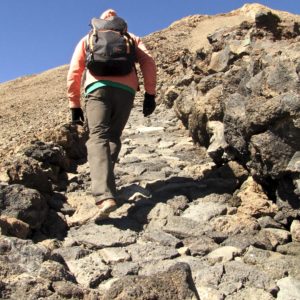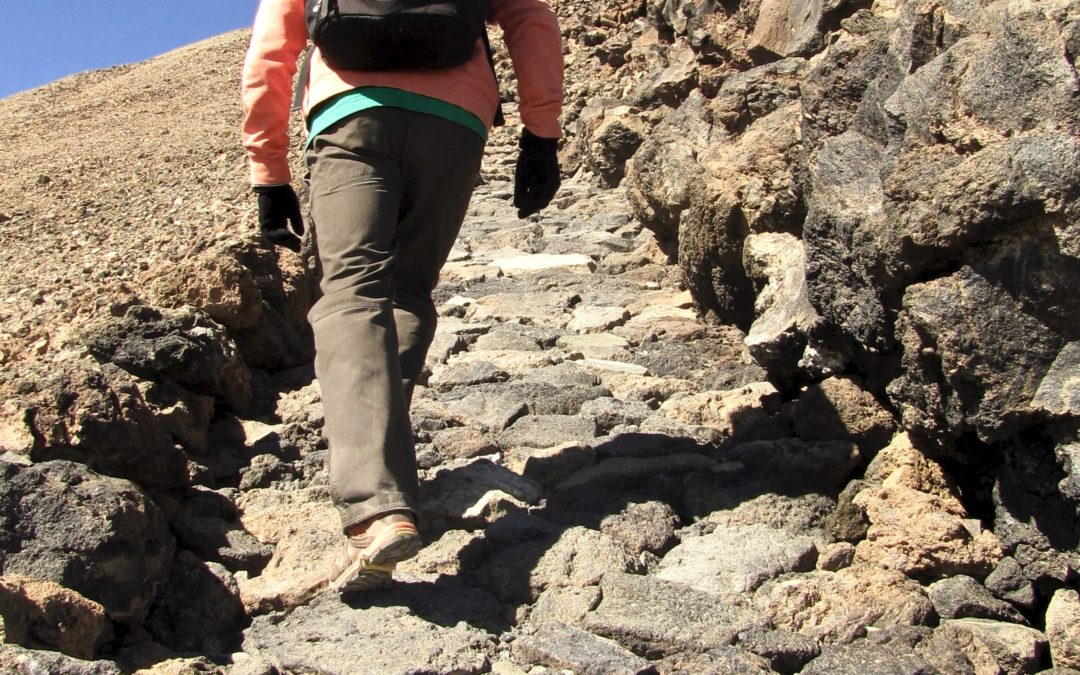 There are a lot of different ways to hike. And no particular hiking style is better than another. Let me say that again: No particular hiking style is better than another.
There are a lot of different ways to hike. And no particular hiking style is better than another. Let me say that again: No particular hiking style is better than another.
Most hikers are wonderful, friendly people. They’re supportive of others. They want you to enjoy hiking as much as they do. But every once in a while you meet someone who says “real” hikers camp at night. Or “real” hikers all thru-hike long-distance trails. Or you’re not a “real” hiker unless you carry a heavy backpack every single day.
I disagree. Any hike is a good hike. Any hiking style is a valid, “real” hiking style. Everyone has to hike in a way that makes sense for them. Because life and health often dictate our hiking styles.
We might not have time to thru-hike a trail. We might not have the physical ability to tote a heavy pack. Or, maybe we just like to shower after a hard day on the trail. There’s no shame in that. It’s all good.
There’s No Shame in Hiking
Here are the main hiking styles and their definitions. Remember: It’s all good!
Thru-hiker: Someone who hikes a long-distance trail in one attempt and typically in sequential order. This definition is a little loose, though.
Many long-distance trails, such as the Appalachian Trail and Pacific Crest Trail, define “thru-hiking” as hiking their respective trails within one calendar year. So does the Florida Trail (FT). I hiked the FT in 2017 via four separate trips to the state in January, March, May and November-December. I hiked the Ice Age Trail (IAT) in 2013 and 2015, both times completing its 1,100 miles through 30-some consecutive days of hiking. Both are considered thru-hikes.
Section-hiker: Someone who hikes a long-distance trail in any order, and over any amount of time. Think of a person who hikes a given trail every weekend, or one week every year for 10 years.
Day-hiker: This hiker type hikes all day, then gets off the trail at night. She might stay in a motel and return to the trail the next day. Or hike one day and come back another week or in another month. A day-hiker can also be a thru-hiker. When I thru-hiked the IAT in 2013 and 2015, I got off the trail every night to sleep in a motel or home.
Slackpacker: Slackpacking is when someone totes your heavy pack/equipment up the trail for you, allowing you to hike with a light daypack. You can slackpack to a camping site, or slackpack all day and meet someone who takes you off the trail at the end of the day.
Backpacker: These hikers carry gear and food that enables them to sleep on the trail at night.
Ultralight Hikers: Ultralighters hate weight. They buy the lightest gear possible and tote the fewest things necessary to get by. They might sleep on a piece of plastic, for example, or use a trekking pole to prop up a tarp in lieu of a tent. The upside: packs that weigh a scant 10 pounds or less. Really!
Remember: No Shame
Hiking is wonderful for so many reasons. It gets you outside, and a gazillion studies prove that the outdoors is a healing, healthy place. It gets you moving, and we all know exercise is key to a healthy life. Hiking immerses you in our beautiful environment. And who doesn’t need a little beauty in life?
So embrace the hiker you are. Don’t worry if you become a different type of hiker as life marches on. I can’t stress this enough: It’s all good!
An Ultralight Piece of Gear to Try!
Liteflex Trekking Umbrella: Amazon
Liteflex Trekking Umbrella: Gossamer Gear





